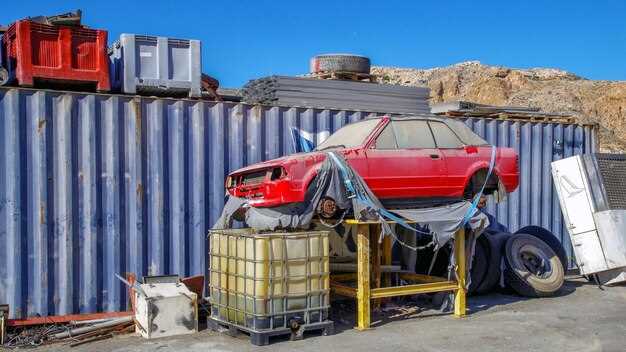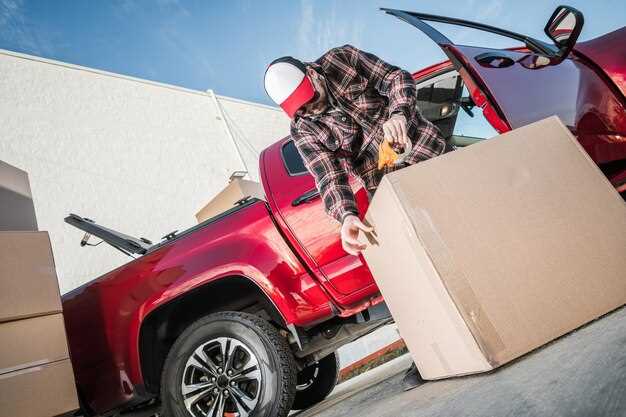
Shipping a salvage car is a task that requires careful planning and consideration. Many people underestimate the complexities involved in transporting a damaged vehicle, leading to various issues that could have been easily avoided. Understanding these common mistakes can save you time, money, and headaches during the shipping process.
One of the primary concerns in salvage car shipping is ensuring that the vehicle is adequately prepared for transport. Failing to properly assess the car’s condition can result in unexpected issues during transit, such as leaks or parts falling off. Additionally, not knowing the regulations that pertain to salvage vehicles can lead to legal complications that can delay or even prevent the shipping process.
Moreover, selecting the right shipping company is crucial. Many individuals make the mistake of choosing a provider based solely on cost without considering their reputation and experience in handling salvage operations. This can lead to subpar service and greater issues down the line, including damage during transport or delays in delivery. Being informed and aware of these pitfalls is essential for a smooth and successful shipping experience.
Choosing the Right Shipping Method for Salvage Vehicles

When transporting salvage vehicles, selecting the appropriate shipping method is crucial to ensure safety and prevent potential issues during transit. Various options are available, each with its own set of advantages and considerations.
One popular method is flatbed transportation, which is particularly suitable for salvage cars in poor condition. This method allows for easy loading and unloading while minimizing the risk of damage during the journey. However, it may not be the most cost-effective choice, especially for long distances.
Enclosed trailers also provide an excellent option for transporting salvage vehicles. This method offers protection from environmental factors and road debris, thus enhancing safety during transit. However, enclosed shipping may come at a higher price compared to open transport options.
Open transport is often more affordable and can be convenient for salvage vehicles that are not operational. While this method exposes the vehicle to outside elements, it is generally safe for short trips. Nonetheless, potential damage from weather or road conditions should be considered.
Regardless of the shipping method chosen, it is essential to work with a reputable carrier experienced in handling salvage vehicles. Ensuring that they have the necessary equipment and expertise can help mitigate safety concerns and avoid issues throughout the shipping process.
In conclusion, carefully evaluating the shipping options for salvage vehicles based on safety, cost, and specific needs will contribute to a smoother experience. Always prioritize working with professionals who understand the unique challenges associated with transporting damaged or non-operational cars.
Understanding Insurance Requirements for Salvage Car Transport

When transporting salvage cars, understanding insurance requirements is essential for ensuring safety throughout the process. Salvage vehicles often involve unique challenges, which can lead to increased risk during transport. Therefore, both the owner and the transport company must be aware of the necessary insurance coverage.
First, it is crucial to verify that the transport company has appropriate liability insurance. This insurance should cover damage that may occur while the vehicle is in transit. Check for coverage limits and ensure that they are sufficient to protect the value of the salvage car being transported.
Secondly, consider the type of salvage car being shipped. Some vehicles may require additional coverage due to their specific condition or value. Enhanced insurance options such as cargo insurance can provide additional peace of mind, protecting against damages during transport.
Additionally, understanding the local regulations regarding salvage car insurance is vital. Different states have varying laws that may affect the transport process. Familiarizing yourself with these regulations can help you avoid potential fines and complications during shipping.
Lastly, communicate openly with the transport service regarding any existing insurance policies. Inform them if you already possess coverage that may extend to salvage vehicle transport or if you need the company to provide specific insurance policies. Proper planning will ensure a safer transport experience and minimize unexpected expenses.
Preparing Your Salvage Car for Safe Shipping
When preparing your salvage car for transport, ensuring safety during the shipping process is paramount. Begin by securing all loose parts, including mirrors, bumpers, and antennas, to prevent damage during transit. If any components are damaged, consider removing them to avoid further complications.
Check the fluid levels, including oil, coolant, and fuel. It is advisable to drain the fuel tank to reduce weight and minimize the risk of leaks or fires. Emptying the tank also complies with safety regulations for transport, especially if the vehicle will be transported via flatbed or container.
Inspect the battery to ensure it is securely fastened and free from corrosion. If the vehicle will sit for an extended period, consider disconnecting the battery to prevent drainage. Additionally, ensure that the tires are properly inflated and in good condition to facilitate safe transport.
Documentation is vital. Gather all necessary paperwork, including the title, bill of sale, and any documentation from your insurance or salvage yard. This ensures a smooth shipping process and compliance with legal requirements.
Communicate with your transport provider about any special instructions or concerns regarding your salvage car. Understanding their protocols for loading and securing your vehicle will enhance safety throughout the journey.
By following these steps, you will adequately prepare your salvage car for transport, ensuring both safety and security during the shipping process.
